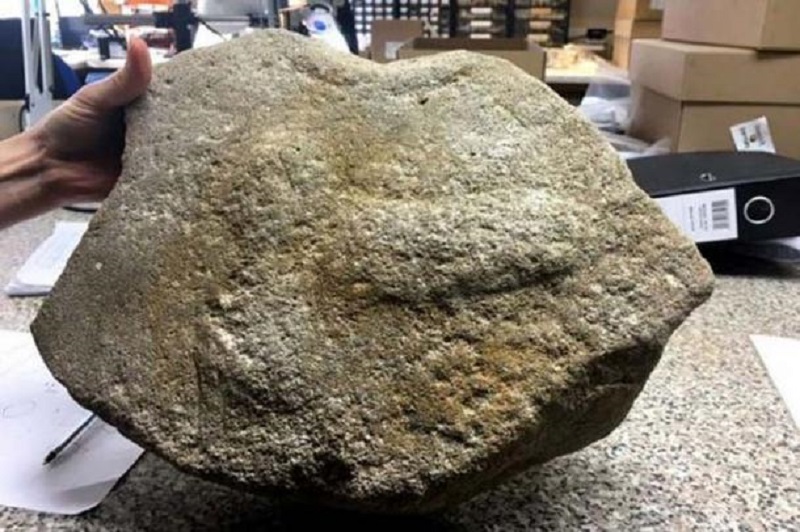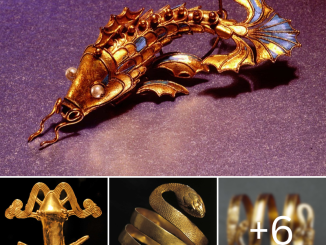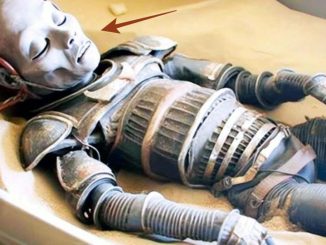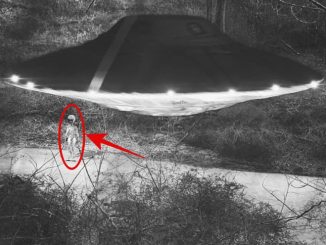A Roman “penis pendant,” or more accurately a phallic amulet, found in England 18 months ago, has been declared a national treasure. Described as a first-of-its-kind find, it was discovered by metal detectorist Wendy Thompson on December 31st, 2020 while searching a farm in Higham, near Gravesend and Strood, in Kent, reports The Sun UK. It is believed to date back to between 43 AD and 410 AD, when Britain was occupied by the Romans.

Wendy Thompson found the penis pendant while metal-detecting. (Wendy Thompson)
First-of-It’s-Kind Penis Pendant Find for Britain
“The rarity of it is that it’s a silver example of a penis pendant,” explained Thompson. “I’ve got other bronze ones that I have found in the past but they’re nowhere almost as significant.” The 73-year-old added that she was going about her job, scouring the field end to end rather meticulously with her metal detector, when she found it wedged 8 inches (20.32 cm) into the earth.
“The last person to hold it was back in that era,” said Thompson excitedly. “It’s a long, long time it’s been lying in the ground waiting for me to come along and find it.” She immediately dated it to 2,000 years old, which was verified later by the coroner’s report from the British Museum, although the exact date is difficult to determine.
The penis pendant measures 1.2 inches (3 cm) and weighs 0.3 ounces (9.7 g), and is complete with a detailed “foreskin, shaft, and pubes,” according to Coroner Roger Hatch, though it conspicuously lacks testicles. In the same report, he classified it as a “national treasure.” For an item to be classified as a “treasure” in England, Wales, and Northern Ireland, as per the British Museum, it can be a metallic object, other than a coin, whose weight is at least 10 percent precious metal, and is at least 300 years old when found.
Hatch also added that the Roman Empire is famous for its “large corpus of phallic imagery”. In fact, there are 451 phallic objects recorded in Roman Britain alone. As per a report published in The Daily Mail, experts at the British Museum described the artifact as having a reverse triangular top section with “ribbed decoration, perhaps pubic hair, narrowing to a tapering shaft and terminating in a raised band foreskin.”
Back in 2021 archaeologists discover a millstone in Cambridgeshire with a Roman phallus carving. (Highways England)
Greco-Roman Obsession with the Phallus
In Greco-Roman culture the phallus or the penis had virile regenerative powers, enabling fertility and domination. To an empire that was preoccupied with territorial expansion, sex was conceptually seen as an unequal exchange led by a man who would dominate an “inferior” or “weaker” being – women, girls, boys, male slaves, to name a few. The phallic symbol was so common that it was associated with the worship of male gods like Dionysus and Hephaestus. It was also a good luck charm used to ward off evil, seen on mosaics and tiles all across the empire.
In ancient Roman religion and magic, the fascinus or fascinum was the embodiment of the divine phallus. The fascinum was worn by children around their necks to ward off illnesses. They were sometimes used to indicate the social standing of the wearer as well. “Infants are under the especial guardianship of the god Fascinus, the protector, not of infants only, but of generals as well,” wrote legendary Roman philosopher and historian, Pliny the Elder.
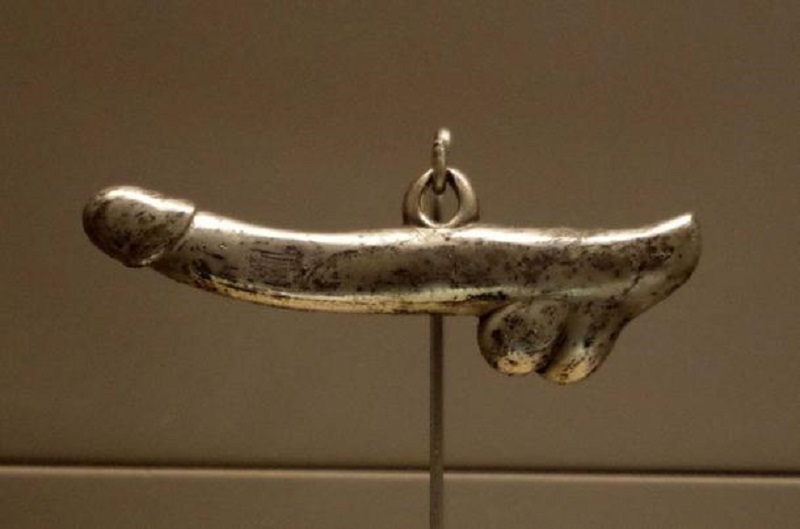
The fascinum, or penis pendants, were worn by children to ward off illness. (David Perez / CC BY 4.0)
When Roman generals entered battle, the penis was the symbol used to announce a grand and powerful entry. “It is the image of this divinity that is attached beneath the triumphant car of the victorious general, protecting him, like some attendant physician, against the effects of envy,” added Pliny on the mythical phalluses that represent domination.
Viva La Vulva! When Did Female Genitalia Become Obscene?
Rare Ancient Millstone Found Decorated With A Roman Phallus Carving
“It is likely that this pendant is depicting a flaccid macrophallus, rather than an erect one, with the possibility that, rather than representing the ability to target and defeat the evil eye, a lack of control and an almost barbaric sexuality is suggested,” stated a report by the British Museum which confirms this phallocentric Roman obsession. “The archaeological contexts of stratified examples, along with phallic wall carvings, such as at Hadrian’s wall, suggest a close association with military sites.”
